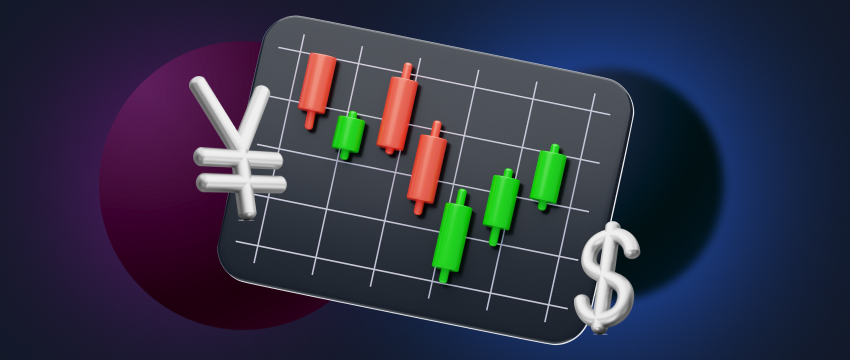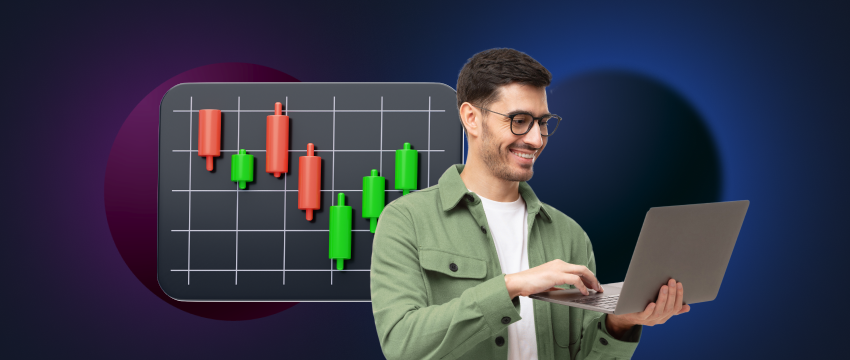In forex, there are many strategies to suit different trading styles and risk tolerance. Position traders, known for their patience and long-term outlook, often use this popular strategy that involves holding a currency pair for a long period of time, sometimes weeks, months or even years, to profit from price fluctuations.
In this article, we will explore position trading, how it’s used in forex investing, strategies used, and the pros and cons.
What is position trading?
Position trading involves buying an investment for the long term, expecting its value to increase over time.
Traders are not concerned with short-term price fluctuations and current news unless they have an impact on the trader’s long-term view of the position. Most position traders make less than 10 trades in a year.

How is position trading used in forex?
Position trading in forex focuses on identifying and following long-term trends in the currency market. Because of the high volatility of the forex market, traders must wait until significant trends have emerged before acting.
For example, when the UK voted to leave the EU in 2016, the value of the British pound dropped sharply. Investors sold UK assets due to the uncertainty around Brexit.
Position traders would have used this opportunity to open a long-term position, expecting the pound to remain weak over the long term.
In forex investing, interest rate policy is also useful. In 2023, most central banks, including the US Federal Reserve, raised interest rates after keeping them at record lows during the pandemic. The Bank of Japan, though, chose to keep its interest rates at historic lows.
Long-term money market fund managers took advantage of this by borrowing money at low interest rates in Japan, converting it to US dollars, and buying bonds with higher interest rates, profiting from the difference between the two interest rates.
Position traders in the forex market could have capitalised on this event by buying USD/JPY, which saw a sustained increase in value during most of 2022. This type of trade is known as a carry trade in the forex market.
Position trading strategies
Traders can use a variety of strategies to spot profitable opportunities. In order to predict long-term market trends, these strategies combine both technical and fundamental analysis.
Trend following
Trend following involves finding a strong market trend and opening a position in the direction of that trend.
The idea is that once a trend begins, it tends to continue for a while, providing traders with an opportunity to earn profits from following these trends. Trend following requires a lot of discipline as traders must avoid closing their positions too soon.
The key is to use different technical indicators, such as moving averages, relative strength index (RSI) and MACD to identify the start of a trend as early as possible.
When a trend is identified, the investor will open a position in the trend’s direction and hold it until the trend reverses.
Breakout trading
Breakout trading is another common position trading strategy. It involves identifying a price level that a security has been unable to break through; for uptrends, this is called a resistance level, and for downtrends a support level.
After the price breaks through this level, the investor opens a position, expecting the price to continue moving in the same direction.
For breakout trading, you need a good understanding of support and resistance, and the ability to interpret price charts with accuracy since not all breakouts lead to a sustained price movement.

Pros and cons of position trading
ข้อดี
- Opportunities to capitalise on long-term trends. Forex traders can profit from larger price movements by focusing on long term trends, especially if they have a high-risk tolerance and a large amount of capital to invest.
- Short-term decision making is reduced. Compared to day investing, position trading needs less time and effort. Position traders need less time to monitor the market and make investment decisions because they execute fewer transactions.
- The ability to profit from global market trends, including changes in central bank interest rates, shifting commodity prices, or political events like elections or trade agreements.
ข้อเสีย
- A trader may wish to follow a long-term trend, but the market can be unpredictable.
- Holding positions for longer periods means there is less available capital to invest in other opportunities that could perform better.
- If using CFDs (contracts for difference), the overnight swap fees can reduce any profits.
Is position trading for every trader?
Every investor and trader must match their trading styles to their individual goals. Every style has its own set of pros and cons.
The first thing that the investor has to consider is the reason they are investing in the first place. Is it about building long-term wealth for the future or making a living through CFD trading?
And how much time are you willing to commit to monitoring your portfolio on a daily or weekly basis?
Markets with strong trends are ideal for position trading. In bear markets, it is less effective.
How to become a position trader
1. Create a trading plan
An investment plan should define how and when trades are executed. It serves as a structured set of rules and objectives designed to promote logical decision-making and reduce emotional influences in trading.
A comprehensive plan typically includes entry and exit criteria, the desired number of transactions within a given timeframe, and the amount of time allocated to market monitoring.
2. Research and gather relevant information
Position traders look at longer term outlooks, which will mostly be driven by fundamental factors like company earnings, macroeconomic data releases and breaking news.
Therefore, staying up to date with the latest analysis is essential for understanding the broader context of a chosen trading instrument.
3. Understand technical analysis
Technical analysis uses indicators and historical price data to identify trends and patterns.
Even though position investing is a longer-term strategy, it still needs an understanding of technical indicators and price action to find the best entry and exit points for each transaction.
4. Risk management
Effective risk management is essential across all trading styles—whether position trading, swing trading, or scalping. This becomes particularly important when using leveraged instruments like CFDs.
One of the most common methods for controlling potential losses is the use of stop-loss and limit orders, which automatically close positions at predefined levels.

Conclusion
In summary, position trading is a long-term investing strategy that involves holding onto a position for a long time, usually from months to years.
It requires an in-depth understanding of market trends, a lot of patience and discipline, and an effective risk management strategy.
Although position investing has great potential for large profits, it also carries a high degree of risk. Therefore, before choosing to use this strategy, traders should fully understand the challenges of position trading.
Disclaimer: This material is for general informational and educational purposes only and should not be considered investment advice or an investment recommendation. T4Trade is not responsible for any data provided by third parties referenced or hyperlinked in this communication.




